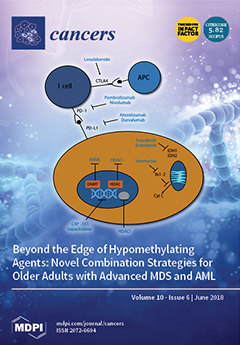1
Anesthesia and Intensive Care & Pain Relief and Supportive Care, La Maddalena, 90146 Palermo, Italy
2
Molecular and Clinical Medicine Medical Oncology, La Sapienza University of Rome, 00155 Rome, Italy
3
Anesthesiology, Resuscitation, and Pain Therapy Department, National Cancer Institute, IRCCS Foundation Pascale, 80131 Naples, Italy
4
Palliative Care, Pain Therapy and Rehabilitation, National Cancer Institute, IRCCS Foundation, 20133 Milan, Italy
5
Palliative Care and Pain Therapy Unit, Careggi Hospital, 50139 Florence, Italy
6
Primary Care Unit, ASL RM1, 00165 Rome, Italy
7
Department of Clinical Science and Translational Medicine, University of Rome Tor Vergata, 00133 Rome, Italy
8
Second Medical Oncology Division, Città della Salute e della Scienza Hospital of Turin, 10126 Turin, Italy
9
Medical Specialties Department, Oncology and Oncologic Hematology, ASL 13 Mirano, 30035 Venice, Italy
10
Medical Oncology Unit, Ospedale di Circolo e Fondazione Macchi Hospital, 21100 Varese, Italy
11
Medical Oncology Unit, ARNAS Ospedale Civico Di Cristina Benfratelli, 90127 Palermo, Italy
12
Medical Oncology, A.O.R.N. Cardarelli, 80131 Naples, Italy
13
Palliative Care Unit, SAMO ONLUS, 95131 Catania, Italy
14
Palliative Care Unit, ASL AL, 15033 Casale Monferrato, Italy
15
Palliative Care Unit, Department of Primary and Community Care, ASL 3 Genovese, 16125 Genoa, Italy
16
Palliative Care and Pain Therapy Unit, European Oncology Institute IRCCS, 20141 Milan, Italy
17
Abdominal Medical Oncology, National Cancer Institute, IRCCS Foundation Pascale, 80131 Naples, Italy
18
Palliative Care and Pain Therapy Unit, Papa Giovanni XXIII Hospital, 24121 Bergamo, Italy
19
Medical Oncology Unit, National Cancer Research Center “Giovanni Paolo II”, 70124 Bari, Italy
20
Pain Therapy Unit, “A. Businco” Hospital, ASL 8, 09134 Cagliari, Italy
21
Department of Biotechnological and Applied Clinical Sciences, Section of Clinical Epidemiology and Environmental Medicine, University of L’Aquila, 67100 L’Aquila, Italy
22
Medical Oncology Unit, S. Croce Hospital, 61032 Fano-Pesaro, Italy
23
Section of Clinical Pharmacology and Oncology, Department of Health Sciences, University of Florence, 50139 Florence, Italy
24
Department of Medicine and Surgery Sciences, University of Bologna, 40126 Bologna, Italy
25
PainTherapy, S. Croce e Carle Hospital, 12100 Cuneo, Italy, vmenardo@gmail.com
26
Pain Therapy ICS Maugeri, IRCCS Foundation 27100 Pavia, Italy
27
Medical Oncology, Azienda Sanitaria Universitaria Integrata di Trieste, 34128 Trieste, Italy
28
Medical Oncology, Azienda Sanitaria Universitaria Integrata di Udine, 33100 Udine, Italy
29
Palliative Care and Oncologic Pain Service, S. Camillo-Forlanini Hospital, 00152 Rome, Italy
30
Pain Medicine Unit, S. Camillo-Forlanini Hospital, 00152 Rome, Italy
31
Pain Relief, A.O. Dei Colli, Monaldi Hospital, 80131 Naples, Italy
32
Division of Medical Oncology, Department of Oncology, S. Chiara University Hospital, 56126 Pisa, Italy
33
Medical Oncology, Castelfranco Veneto Hospital, 31033Treviso, Italy
34
Department of Palliative Care with Hospice and Pain therapy Unit, “G. Salvini” Hospital, Garbagnate Milanese, 20024 Milan, Italy
35
Department of Medical Oncology, Campus Bio-Medico University of Rome, 00128 Rome, Italy
36
Palliative Care, FARO Foundation, 10133 Turin, Italy
37
Department of Biotechnological and Applied Clinical Sciences, University of L’Aquila, 67100 L’Aquila, Italy
†
Membership of the Italian Oncologic Pain Multisetting Multicentric Survey (IOPS-MS) Study Group is provided in the Acknowledgments.
add
Show full affiliation list
remove
Hide full affiliation list






